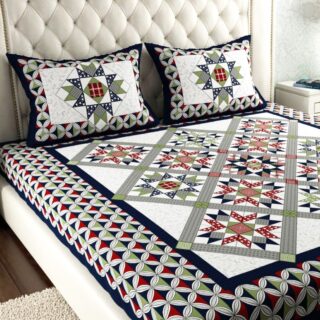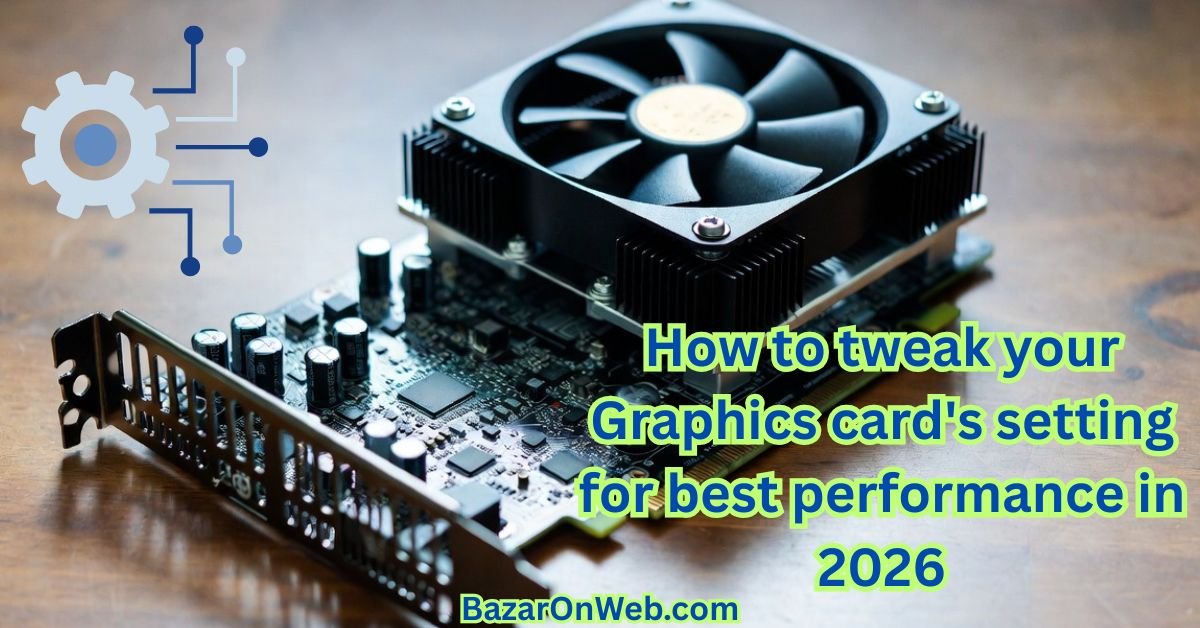Category
Popular Articles
- AI (9)
- Android (35)
- App Suggest (4)
- Apple (5)
- Apple TV (2)
- Bluetooth (2)
- Cars (2)
- ChatGpt (1)
- Did you know? (1)
- E-Commerce News (1)
- Ecommerce Websites business (7)
- Electronics Shopping (5)
- Fashion Tips (3)
- Gaming (3)
- Google Gemini (3)
- Hair Care Tips (2)
- How to (13)
- iCloud (1)
- Infotainment System (1)
- Iphone (93)
- Job Posting (1)
- Mac (18)
- Mobile Games (1)
- Netflix (1)
- Online Shopping Websites (2)
- Product Reviews (3)
- Roku TV (4)
- Samsung (7)
- Shopping Tips (10)
- Tech (58)
- Windows 11 (4)
Discounted Products
-
 Leo Creation 144 TC Cotton Double Jaipuri Prints Flat Bedsheet(Pack of 1, Blue, Gree, Red, Grey, Light Grey)
Leo Creation 144 TC Cotton Double Jaipuri Prints Flat Bedsheet(Pack of 1, Blue, Gree, Red, Grey, Light Grey)
₹2,999.00Original price was: ₹2,999.00.₹329.00Current price is: ₹329.00. -
 Home Garage 210 TC Cotton King Floral Fitted (Elastic) Bedsheet(Pack of 1, Grey)
Home Garage 210 TC Cotton King Floral Fitted (Elastic) Bedsheet(Pack of 1, Grey)
₹999.00Original price was: ₹999.00.₹299.00Current price is: ₹299.00. -
 Goodrik 140 TC Cotton Double 3D Printed Flat Bedsheet(Pack of 1, Brown)
Goodrik 140 TC Cotton Double 3D Printed Flat Bedsheet(Pack of 1, Brown)
₹499.00Original price was: ₹499.00.₹229.00Current price is: ₹229.00. -
 GLOBALSHOP 350 TC Microfiber Double Floral Flat Bedsheet(Pack of 1, Multicolor)
GLOBALSHOP 350 TC Microfiber Double Floral Flat Bedsheet(Pack of 1, Multicolor)
₹1,250.00Original price was: ₹1,250.00.₹263.00Current price is: ₹263.00. -
 RisingStar 250 TC Microfiber King Printed Fitted (Elastic) Bedsheet(Pack of 1, FITTED-ROUND-CIRCLES-PREMIUM)
RisingStar 250 TC Microfiber King Printed Fitted (Elastic) Bedsheet(Pack of 1, FITTED-ROUND-CIRCLES-PREMIUM)
₹2,299.00Original price was: ₹2,299.00.₹299.00Current price is: ₹299.00. -
 Home Garage 210 TC Cotton King Floral Fitted (Elastic) Bedsheet(Pack of 1, Fitted Black Green)
Home Garage 210 TC Cotton King Floral Fitted (Elastic) Bedsheet(Pack of 1, Fitted Black Green)
₹1,299.00Original price was: ₹1,299.00.₹299.00Current price is: ₹299.00. -
 Home Garage 180 TC Cotton King 3D Printed Flat Bedsheet(Pack of 1, White)
Home Garage 180 TC Cotton King 3D Printed Flat Bedsheet(Pack of 1, White)
₹999.00Original price was: ₹999.00.₹229.00Current price is: ₹229.00. -
 Home Sizzler 153 cm (5 ft) Polyester Room Darkening Window Curtain (Pack Of 2)(Floral, Maroon)
Home Sizzler 153 cm (5 ft) Polyester Room Darkening Window Curtain (Pack Of 2)(Floral, Maroon)
₹799.00Original price was: ₹799.00.₹299.00Current price is: ₹299.00. -
 Panipat Textile Hub 152.4 cm (5 ft) Polyester Window Curtain (Pack Of 2)(Solid, Aqua)
Panipat Textile Hub 152.4 cm (5 ft) Polyester Window Curtain (Pack Of 2)(Solid, Aqua)
₹1,899.00Original price was: ₹1,899.00.₹299.00Current price is: ₹299.00. -
 Home Sizzler 214 cm (7 ft) Polyester Semi Transparent Door Curtain (Pack Of 2)(Floral, Maroon)
Home Sizzler 214 cm (7 ft) Polyester Semi Transparent Door Curtain (Pack Of 2)(Floral, Maroon)
₹1,199.00Original price was: ₹1,199.00.₹399.00Current price is: ₹399.00. -
 Home Sizzler 153 cm (5 ft) Polyester Room Darkening Window Curtain (Pack Of 2)(Floral, Brown)
Home Sizzler 153 cm (5 ft) Polyester Room Darkening Window Curtain (Pack Of 2)(Floral, Brown)
₹799.00Original price was: ₹799.00.₹299.00Current price is: ₹299.00. -
 Stella Creations 214 cm (7 ft) Polyester Room Darkening Door Curtain (Pack Of 2)(Abstract, Brown)
Stella Creations 214 cm (7 ft) Polyester Room Darkening Door Curtain (Pack Of 2)(Abstract, Brown)
₹1,299.00Original price was: ₹1,299.00.₹449.00Current price is: ₹449.00. -
 Homefab India 152.5 cm (5 ft) Polyester Room Darkening Window Curtain (Pack Of 2)(Floral, Light Blue)
Homefab India 152.5 cm (5 ft) Polyester Room Darkening Window Curtain (Pack Of 2)(Floral, Light Blue)
₹1,199.00Original price was: ₹1,199.00.₹319.00Current price is: ₹319.00. -
 Urban Home 214 cm (7 ft) PVC Transparent Door Curtain Single Curtain(Solid, Off White)
Urban Home 214 cm (7 ft) PVC Transparent Door Curtain Single Curtain(Solid, Off White)
₹699.00Original price was: ₹699.00.₹203.00Current price is: ₹203.00. -
 Panipat Textile Hub 213 cm (7 ft) Polyester Door Curtain (Pack Of 2)(Solid, Brown)
Panipat Textile Hub 213 cm (7 ft) Polyester Door Curtain (Pack Of 2)(Solid, Brown)
₹1,199.00Original price was: ₹1,199.00.₹349.00Current price is: ₹349.00.
Affiliate Links
Promotion

Feeling like your games are stuttering or your creative software is lagging? You’re not alone. Getting the best performance from your graphics card can feel like a secret science, but it doesn’t have to be. As someone who relies on a smooth, responsive PC for everything from family photo editing to unwinding with the latest games, I’ve learned that a few smart tweaks make all the difference. Let’s dive into your graphics control panel and system settings together—no technical degree required—to unlock the silky-smooth performance your hardware has been hiding.
For the best graphics card performance in 2026, you’ll use a combination of software optimization and smart hardware choices. I’ve put together a practical guide based on current trends to help you get the most out of your GPU.
Here’s a quick overview of the key tweaks you can make:
| Optimization Category | Specific Setting | What It Does & Why It Helps |
|---|---|---|
| Windows 11 System Settings | Enable Game Mode | Prioritizes CPU/GPU resources for your game, minimizing background task interference. |
| Adjust Power Mode to “Best Performance” | Ensures your CPU and GPU run at full power, preventing performance throttling. | |
| Use Optimizations for windowed games | Reduces lag and improves frame pacing in borderless windowed mode. | |
| Set High-Performance GPU per game | Manually assigns a powerful dedicated GPU to specific games, crucial for laptops. | |
| In-Game & Driver Settings | Master AI Upscaling (DLSS/FSR/XeSS) | Boosts frame rates significantly by rendering at a lower resolution and using AI to sharpen the image. |
| Leverage Frame Generation | Uses AI to insert extra frames between rendered ones, making gameplay feel much smoother. | |
| Tweak In-Game Presets | Lowering demanding settings like shadows, reflections, and anti-aliasing can greatly improve FPS. | |
| Advanced & Future Tech | Explore Dual GPU Setups (Budget) | Uses one GPU for rendering and another for frame generation, a creative budget solution. |
| Future-Proof with VRAM & Architecture | Choosing a card with ample VRAM (16GB+) ensures it can handle future, more demanding games. |
🚀 Software & Operating System Tweaks
Maximizing performance starts with configuring your operating system to eliminate bottlenecks and prioritize gaming.
-
Harness Windows 11 Gaming Features: Modern Windows has built-in tools designed for gamers. Game Mode is perhaps the most important; when enabled, it tells Windows to prioritize system resources for your game, leading to smoother performance . Additionally, the “Optimizations for windowed games” feature makes playing in borderless windowed mode feel much more responsive, a common pain point for multi-taskers .
-
Power and Graphics Settings: Don’t let your system slow itself down. Go to your power settings and select the “Best Performance” plan. This ensures your CPU and GPU can draw full power when needed, preventing performance throttling . For laptop users or those with multiple GPUs, it’s crucial to manually assign your powerful dedicated GPU to each game through the Windows Graphics Settings menu .
🎮 In-Game Settings & Driver Optimization
Once your system is fine-tuned, the next step is to master the game and driver settings themselves.
-
Embrace AI-Powered Technologies: In 2026, simply turning down the resolution is an outdated practice. The key to performance is using AI upscaling. NVIDIA’s DLSS, AMD’s FSR, and Intel’s XeSS are technologies that render the game at a lower resolution and then use artificial intelligence to intelligently upscale it back to your monitor’s native resolution. This provides a massive boost to frame rates with minimal loss in visual quality . If your card supports it, Frame Generation can take this even further by inserting AI-created frames between the ones your GPU renders, dramatically increasing smoothness .
-
Balance Visuals and Performance Manually: If you’re still not hitting your target frame rate, focus on the most demanding settings. Options like Shadow Quality, Reflections, Ambient Occlusion, and Anti-Aliasing are often very costly. Lowering these from “Ultra” to “High” or “Medium” can free up significant GPU resources for a smoother experience.
💡 Creative and Future-Facing Strategies
Looking beyond standard settings, there are advanced and forward-thinking ways to squeeze out more performance.
-
Consider an Unconventional Dual GPU Setup: For budget-conscious builders, a creative solution has emerged. By using software like Lossless Scaling, you can configure two different, lower-powered GPUs (like an NVIDIA card and an AMD card) to work together. One handles the main rendering, while the other is dedicated solely to generating frames. This can, in some cases, nearly triple frame rates in demanding games without requiring a single, expensive high-end card .
-
Future-Proof Your Hardware Choices: When it’s time to buy a new card, think beyond just today’s games. In 2026, with games becoming increasingly complex, having sufficient VRAM is critical. As seen in current analyses, cards with only 12GB of VRAM can already struggle with maxed-out settings in new titles, especially when using ray tracing and AI features. Opting for a card with 16GB or more ensures you won’t be held back by memory limitations . Furthermore, choosing a GPU from a newer architecture (like the anticipated NVIDIA Blackwell or AMD RDNA 4) means you’ll get access to the latest and most efficient versions of DLSS, FSR, and other performance-boosting technologies .
I hope this guide gives you a clear roadmap to optimizing your graphics card for 2026 and beyond. Do you have a specific GPU model in mind? Knowing that could help me offer more tailored advice.
Written by Bazaronweb
Latest Tech Articles
- How to build a sustainable wardrobe on a budget

- AI for Personal Finance: Using Bots to Budget, Invest, and Plan

- Ethical AI Usage: Data Privacy, Automation, and the Future of Work

- AI Writing Tools vs. Automation Platforms: The Ultimate Guide to Boosting Productivity in 2026

- How to Use AI (Like ChatGPT) for Daily Workflows, Content Creation, and Side Projects

Products
-
![Apple Watch Ultra 3 [GPS + Cellular 49mm] Running & Multisport Smartwatch w/Rugged Titanium Case w/Black Titanium Milanese Loop - M. Satellite Communications, Advanced Health & Fitness Tracking](https://bazaronweb.com/retailstores/wp-content/uploads/2025/09/apple-watch-320x320.jpg) Apple Watch Ultra 3 [GPS + Cellular 49mm] Running & Multisport Smartwatch w/Rugged Titanium Case w/Black Titanium Milanese Loop - M. Satellite Communications, Advanced Health & Fitness Tracking
Apple Watch Ultra 3 [GPS + Cellular 49mm] Running & Multisport Smartwatch w/Rugged Titanium Case w/Black Titanium Milanese Loop - M. Satellite Communications, Advanced Health & Fitness Tracking
-
 Apple iPad mini (A17 Pro): Apple Intelligence, 8.3-inch Liquid Retina Display, 256GB, Wi-Fi 6E, 12MP Front/12MP Back Camera, Touch ID, All-Day Battery Life — Purple
Apple iPad mini (A17 Pro): Apple Intelligence, 8.3-inch Liquid Retina Display, 256GB, Wi-Fi 6E, 12MP Front/12MP Back Camera, Touch ID, All-Day Battery Life — Purple
-
 Apple AirPods Max Wireless Over-Ear Headphones, Active Noise Cancelling, Transparency Mode, Personalized Spatial Audio, Dolby Atmos, Bluetooth Headphones for iPhone – Space Gray
Apple AirPods Max Wireless Over-Ear Headphones, Active Noise Cancelling, Transparency Mode, Personalized Spatial Audio, Dolby Atmos, Bluetooth Headphones for iPhone – Space Gray
-
 Apple AirPods Pro 2 Wireless Earbuds, Active Noise Cancellation, Hearing Aid Feature, Bluetooth Headphones, Transparency, Personalized Spatial Audio, High-Fidelity Sound, H2 Chip, USB-C Charging
Apple AirPods Pro 2 Wireless Earbuds, Active Noise Cancellation, Hearing Aid Feature, Bluetooth Headphones, Transparency, Personalized Spatial Audio, High-Fidelity Sound, H2 Chip, USB-C Charging
-
 Leo Creation 144 TC Cotton Double Jaipuri Prints Flat Bedsheet(Pack of 1, Blue, Gree, Red, Grey, Light Grey)
Leo Creation 144 TC Cotton Double Jaipuri Prints Flat Bedsheet(Pack of 1, Blue, Gree, Red, Grey, Light Grey)
₹2,999.00Original price was: ₹2,999.00.₹329.00Current price is: ₹329.00.
Leave a Reply